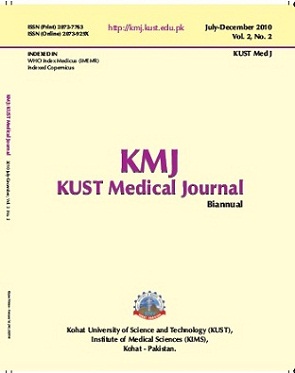MASS MEDIA AND FAMILY PLANNING: UNDERSTANDING THE EFFECTS OF TELEVISION IN INNOVATION-DECISION PROCESS OF HEALTH COMMUNICATION IN DISTRICT PESHAWAR
Main Article Content
Abstract
Objective: To assess the effectiveness of Pakistan Television (PTV) as a tool in altering different levels of human behavior from increasing awareness, persuasion, decision making and confirmation of decision about family planning messages.
Material and Methods: This study was based on theory of diffusion of innovation by Rogers and Shoemaker (1971). The study involved 150 married couples (300 males/females) of child bearing age of Peshawar District. The data was gathered through a cross sectional survey. All data computing was done on excel sheet.
Results: Eighty per cent respondents had a knowledge ranging from “to some extent” (36%), “to great extent” (29%) and “completely” (15%). Only 13% were unaware of the issue. Similarly, 14% respondents stated that television changed their attitude towards family planning “completely”. Another 18% were of the opinion that it changed their attitude “to great extent” and 38% marked as “to some extent”. Only 23% denied any role of television in attitude formation. As per analysis, 13% of the respondents consider television as a potential source for decision making for family planning innovation. Only 11% respondent used television “completely” for confirmation of their decision regarding family planning innovation.
Conclusion: The effects of family planning innovation vary on married couples of child bearing age in the locale under study. Television played a significant role at the knowledge and persuasion level however it was found as less effective at decision and confirmation stages.
Article Details
Work published in KMUJ is licensed under a
Creative Commons Attribution 4.0 License
Authors are permitted and encouraged to post their work online (e.g., in institutional repositories or on their website) prior to and during the submission process, as it can lead to productive exchanges, as well as earlier and greater citation of published work.
(e.g., in institutional repositories or on their website) prior to and during the submission process, as it can lead to productive exchanges, as well as earlier and greater citation of published work.
